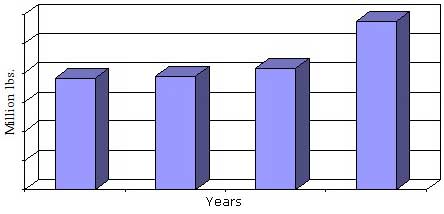Emerging Technology Provides Promise for Continued Flame Retardant Protection While Reducing or Eliminating the Toxic Effects
April 24, 2015
Wellesley, Mass., April 24, 2015 –BCC Research (www.bccresearch.com) reveals in its new report on flame retardant chemicals, the value of the industry is predicted to grow overall. The market is expected to reach $10.4 billion dollars in 2019. Although all market applications for flame retardant chemicals have ties to housing and construction, plastics have been traditionally the largest consumer of flame retardants by volume with textiles close behind.
Over the last few decades, the use of flame retardant chemicals has increased as highly populated countries like China and India have recognized the need for these chemicals in products consumed in their countries. According to the National Fire Protection Association (NFPA), structural fires are by far the most significant in the U.S., resulting in the largest loss of life, injuries and property destruction. These statistics do not include the loss of life associated with fire personnel and the loss to businesses due to downtime and inconvenience, and the impact these fires have on insurance premiums to all consumers.
The global consumption of flame retardant chemicals reached nearly $3.9 billion pounds and nearly $4.2 billion pounds in 2013 and 2014, respectively. Consumption is anticipated to reach a compound annual growth rate (CAGR) of 6.7%, increasing to a total of $5.7 billion pounds in 2019.
“Today, many organizations and governments are reassessing the benefits of flame retardants against the negative side effects that cause harm to human health or the environment. Therefore, the flame retardant chemicals industry is in a state of transition, as some widely used flame retardant chemicals are being phased out," says BCC Research analyst Marcanne Green. “At the same time, emerging technology provides promise for continued flame retardant protection while reducing or eliminating the toxic effects.”
The quandary for this industry is to develop chemistry that will help solve the flammability problem while protecting human health and the environment. Although this challenge seems unachievable, the rapid development of technology in recent years is not only promising, but also indicates possible breakthroughs that could revolutionize the industry.
Flame Retardant Chemicals: Technologies and Global Markets covers the market size, growth and trends for this essential component of the chemical industry. This report evaluates specific market segments by size, projected growth and probable changes as the result of new regulations and emerging technologies.

For 25 years, BCC Research has hosted the Annual Conference on Recent Advances in Flame Retardancy of Polymeric Materials – which focuses on the development of flame retardant chemicals and materials such as plastics, textiles, and surface coatings that inhibit, suppress, or delay the production of flames to prevent the spread of fire. BCC Research's renowned analyst Marcanne Green will be present at the Conference giving her valuable insights on this industry.
Editors and reporters who wish to speak with the analyst should contact Steven Cumming at steven.cumming@bccresearch.com.
Flame Retardant Chemicals: Technologies and Global Markets( CHM014M )
Publish Date: Apr 2015
Data and analysis extracted from this press release must be accompanied by a statement identifying BCC Research LLC as the source and publisher. For media inquiries, email press@bccresearch.com or visit www.bccresearch.com/media to request access to our library of market research.
BCC Library Membership Benefits
Unlimited Access to Market Research Reports for Academic Institutions and Corporations.
Custom Research
Tailored solutions across industries for your unique business needs.
More in Chemicals
- Global High-Purity Solvents Market Surges Amid Demand for Precision and Sustainability
- Engineered Wood Adhesives Emerge as a Cornerstone of Modern Construction
- Global Refrigerants Market to Reach $36.7 Billion by 2030
- Global High-Purity Quartz Market: A Key Enabler of Modern Technology
- Global Flame Retardant Chemicals Market Accelerates in Response to Rising Fire Safety Standards
Reports from Chemicals
Recent News
- Semiconductor Silicon Wafer Market Set to Reach $20.2 Billion Globally by 2030
- BCC Research Forecasts 15.4% CAGR for Global Chip-on-Board LED Market Through 2030
- Semiconductor Chip Market to Grow 16.1% Annually Despite Global Shortage
- GaN Chargers Power Up: Market Set for 20.8% CAGR by 2030
- CO₂-Based Plastics Market to Grow at 27.8% CAGR Through 2030
